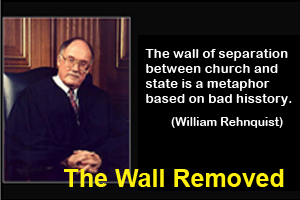

These Are The Three Reasons Fascism Spread In 1930s America — And Might Spread Again Today
By Seva Gunitsky
August 12, 2017
The violent white nationalist rally in Virginia has reawakened simmering fears of American fascism. But the roots of these feelings — and the militant organizations that promoted them — did not begin with the election of President Trump. The last time fascism was brazenly embraced was in the 1930s. The lessons of that crucial decade bear increasing relevance for modern American life. The three big factors that drove the spread of American fascism at that time are still relevant for America today.
Fascist ideas were quite popular in 1930s America
In the 1930s, fascist ideas were increasingly accepted. This was reflected in the energetic growth of Nazi organizations. Ku Klux Klan rallies were common and numerous; Trump’s own father was arrested at one such rally, reportedly while wearing a Klan outfit. A 1941 book found that more than 100 such organizations had formed since 1933.
The appeal of fascist ideas extended far beyond the fringe, reaching prominent citizens such as
Henry Ford and Charles Lindbergh. Lindbergh went so far as to praise Adolf Hitler as
“undoubtedly a great man.” In 1940, Lindbergh’s wife published a bestseller that called totalitarianism “The Wave of the Future” and an “ultimately good conception of humanity.”
At the time, Jews served the same role for U.S. fascists that immigrants, Muslims and other minorities serve today: a vague but malicious threat they believed to be undermining America’s greatness. Surveys of U.S. public opinion from the 1930s are a startling reminder of just how widespread these attitudes became. As late as July 1942, a Gallup poll showed that 1 in 6 Americans thought Hitler was “doing the right thing” to the Jews. A 1940 poll found that nearly a fifth of Americans saw Jews as a national “menace” — more than any other group, including Germans. Almost a third anticipated “a widespread campaign against the Jews” — a campaign that 12 percent of Americans were willing to support.
The careers of anti-Semitic celebrities such as Catholic Rev. Charles Coughlin reflected the popular appeal of fascist ideas. Father Coughlin, as he was known, enjoyed the second-largest radio audience in the country (after President Roosevelt’s fireside chats), frequently quoted Nazi propaganda minister Joseph Goebbels, and praised the Nazi quest for full employment and racial purity. He broke with Roosevelt in 1934, forming his own party, whose 1936 candidate received nearly 1 million votes. Coughlin was finally silenced by the Catholic Church in early 1942.
These voices welcoming fascism were not marginal radicals but mainstream writers, presidents of major associations and editors of popular journals. In his 1934 presidential address, the president of the American Political Science Association — the nation’s oldest and largest organization of political scientists — railed against “the dogma of universal suffrage” and argued for abolishing a democracy that allowed “the ignorant, the uninformed and the antisocial elements” to vote. If these reforms smacked of fascism, he concluded, then “we have already recognized that there is a large element of fascist doctrine and practice that we must appropriate.”
Three factors helped U.S. fascism spread
So what does the history of American fascism tell us about its resurgence? The good news is that the three major factors that drove its expansion are absent today.
The first was a major economic depression and social dislocation that undermined people’s confidence in democracy and led them to look for alternatives. As a U.S. economist complained in 1933, “democracy is neither very expert nor very quick to action” and cannot resolve “group and class conflicts easily.”
The second factor was fear of communism, which led many leading intellectuals to embrace fascism as a bulwark against Bolshevism and as the lesser of two evils. As in Europe, worries about communism intensified fascism’s appeal in the U.S. “I thank heaven for a man like Adolf Hitler,” argued popular Christian activist Frank Buchman in 1936, “who built a front line of defense against the anti-Christ of communism.”
The third factor was the rise of Nazi Germany as an economic and military powerhouse. Hitler’s ascent began a long period of German recovery, economic expansion and the swift end of unemployment in that country. By 1939, Germany had a labor shortage of 2 million people, while industrial production had more than doubled. Generations of historians have debated whether the recovery was real, but the widespread perception of German success attracted admirers regardless of its reality.
There could be a resurgence of fascism in the U.S.
Even though these three factors no longer exist, similar problems lurk under the surface of modern political life, problems that could conceivably drive a resurgence of fascist movements. The overall U.S. economy has been performing well, but levels of inequality continue to rise. Wide areas of America are increasingly mired in permanent unemployment and a massive drug epidemic. These are the sorts of economic conditions that drove fascist support in the 1930s; another major crisis like the Great Recession is likely to bolster nationalist appeals even more.
Few people worry about the communist threat today. Yet fear of communism has been replaced by fear of globalists and elite technocrats (still often tinged with anti-Semitism) who supposedly seek to undermine and control the lives of ordinary Americans. The recently uncovered National Security Council memo reflected these sentiments clearly, arguing that Trump’s opposition is made up of a cabal of Islamists, cultural Marxists and global bankers. The extreme right-wing blogger Mike Cernovich, who has been praised by Donald Trump Jr., recently published a cartoon showing national security adviser H.R. McMaster as a puppet manipulated by George Soros, who in turn was being manipulated by a monstrous green hand labeled “Rothschilds,” a historically wealthy Jewish family.
The third factor — the appearance of an ideological rival that seemed to outperform America’s corrupt democracy — is today reflected most clearly in fears over the rise of China. Over the past decade, numerous observers have argued that liberal democracy is being supplanted by the kind of state capitalism exemplified by China, in which a capitalist system of production is undergirded by state ownership and guidance, with little room for democracy.
Americans cannot be complacent about democracy
Over the 20th century, democracy spread from a few isolated outposts to most corners of the world. Today its superiority seems self-evident to people who have been steeped in its moral virtues and material successes. But over the past century, mere moral appeal has rarely been sufficient for its survival. It would be a convenient mistake to accept the victory of democracy as a historical morality play, the predestined triumph of good over evil.
For much of the 20th century, democracy’s success depended on the existence of powerful countries such as the United States, examples to be imitated. More than any appeal to freedom, democracy spread because it promised economic prosperity and political stability. But when democracies failed to deliver, as during the Great Depression, the tide of popular and elite opinion shifted just as readily and just as quickly against democratic institutions. The key lesson of the 20th century is that democracy is more fragile than we might like.
Seva Gunitsky is an associate professor of political science at the University of Toronto. His book Aftershocks was recently published by Princeton University Press.
Download







